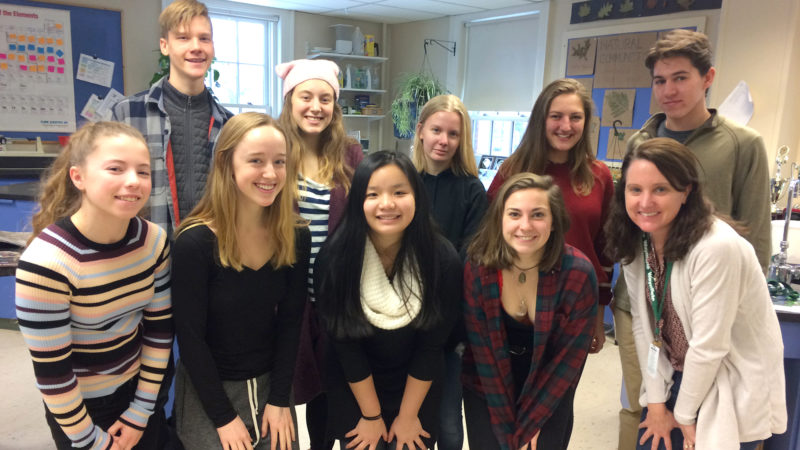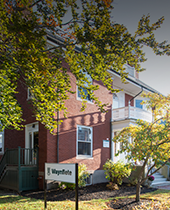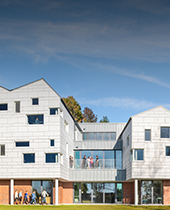Hands-on NASA research in Astrophysics
Waynflete Science Department Chair Wendy Curtis is always on the hunt for ways to connect her students to research opportunities. Last year, she discovered ExMASS (The Exploration of the Moon and Asteroids by Secondary Students), a yearlong research program that immerses students in authentic, open-inquiry research projects. The program is offered by the Houston-based Lunar and Planetary Institute, with support from NASA.
Waynflete was one of only nine schools in the U.S. to be chosen. Each school is paired with a research scientist, who helps vet possible research subjects (Waynflete’s coordinator is Oxford research fellow Dr. Kerri Donaldson Hannah.) The ten Waynflete students were split into two teams. With Dr. Hannah’s assistance, they narrowed the topics down to two: research on asteroid spectra, and investigating resource-rich locations on the surface of the moon that might be suitable for human habitats and research.
The asteroid team is comparing asteroid spectra (light waves or particles) with the spectra of minerals on Earth to better understand asteroid composition and the processes by which they are formed. They are searching for both dry and hydrated minerals on asteroids, which will help them draw conclusions about where the asteroid formed relative to the sun. Asteroid spectra research is a fairly new field, so students are discovering that good data is hard to come by. Their work is further complicated by the fact that they are interested in the “mid-infrared” region of the light spectrum, which has been researched less intensively than the near-infrared region.
The ultimate goal for researchers is to match up meteorites that land on Earth with specific asteroids, allowing scientists to study samples at their leisure. With an understanding of asteroid trajectories, researchers could come to conclusions about where and when asteroids were formed in our solar system. “The more we learn about the formation of our solar system, the better we can understand what we’re observing in newly forming planetary systems,” says Wendy.
The moon team has been closely analyzing images from satellites like the Lunar Reconnaissance Orbiter, using the compiled data as an aid in their search for water, iron, titanium, and other resources. “The possibilities are endless,” says junior Hannah Babcock, whose role on the team is to research previously visited landing sites. “Teams on the moon could take hydrogen from water and make rocket fuel for a mission to Mars.”
Students meet with Wendy for 30 minutes per week for guidance and task assignments. But with the additional outside work “it’s almost like a second class,” says Hannah. Students are in regular contact, collaborating through text messages and shared Google Docs. Waynflete’s teams will videotape the final presentation of their findings for review by a panel of scientists. The top four teams from participating schools will give a live presentation to a second panel of scientists, competing for a chance to show their work at the Exploration Science Forum that will be held at the NASA Ames Research Center in California this summer.
Wendy is thrilled that Waynflete students are capitalizing on this experiential learning opportunity. “Labs are designed for learning, and there is definitely a place for them,” she says “But this is a real lab. This is how scientists conduct research. I think it’s important that students have the chance to try this out, too.”
“I think it really speaks to what it’s like to be a student at Waynflete,” says Hannah, who is considering a career in science. “The club officially meets for only half-an-hour a week, but the amount of time that people devote outside really shows how great it all is and how interested we all are. For me, it’s meant looking at the moon and seeing it as more than just a rock in the sky. It’s really cool to think about how much knowledge I’ve already gained.”



